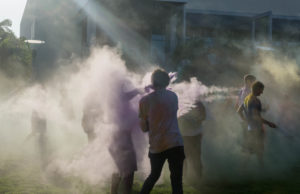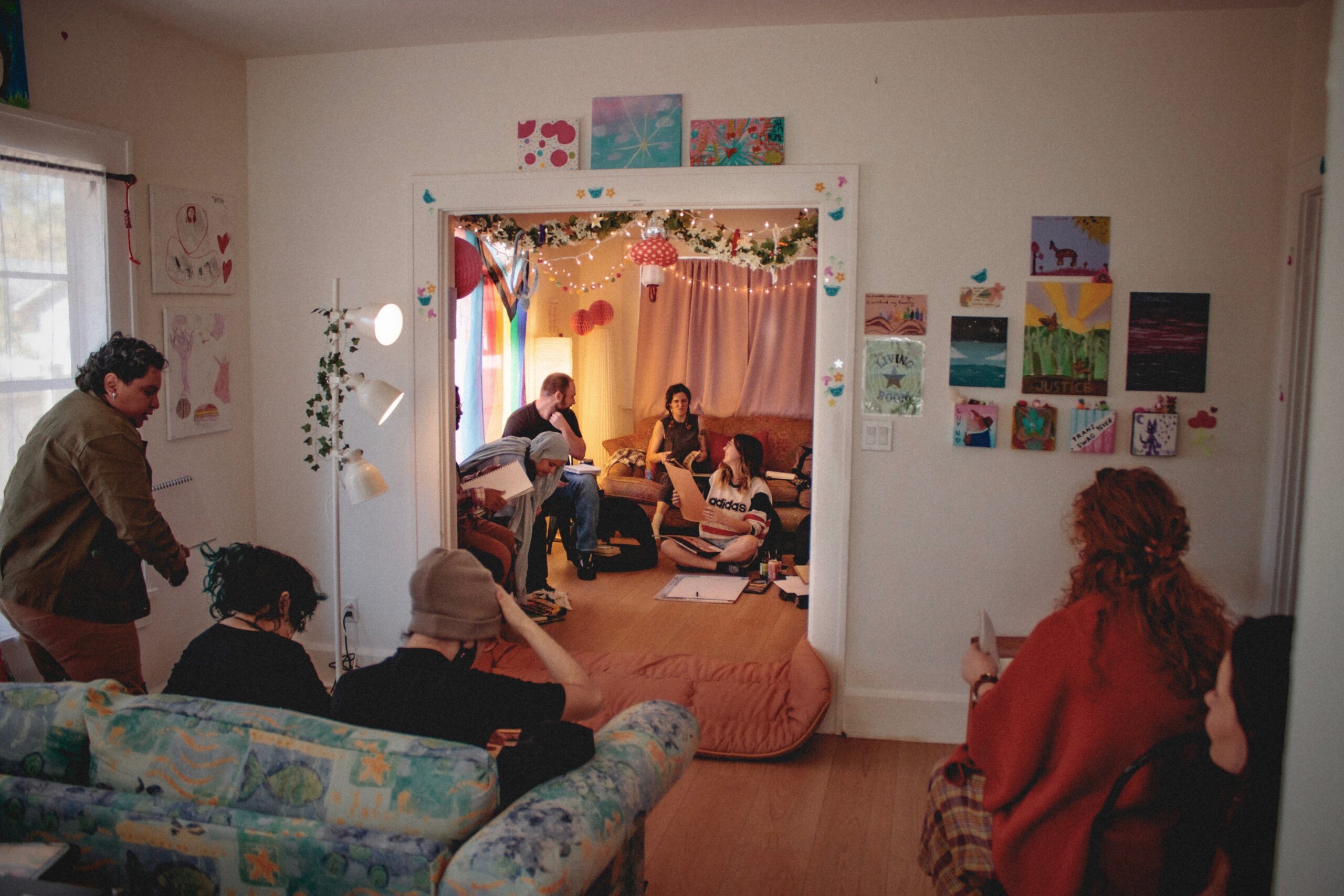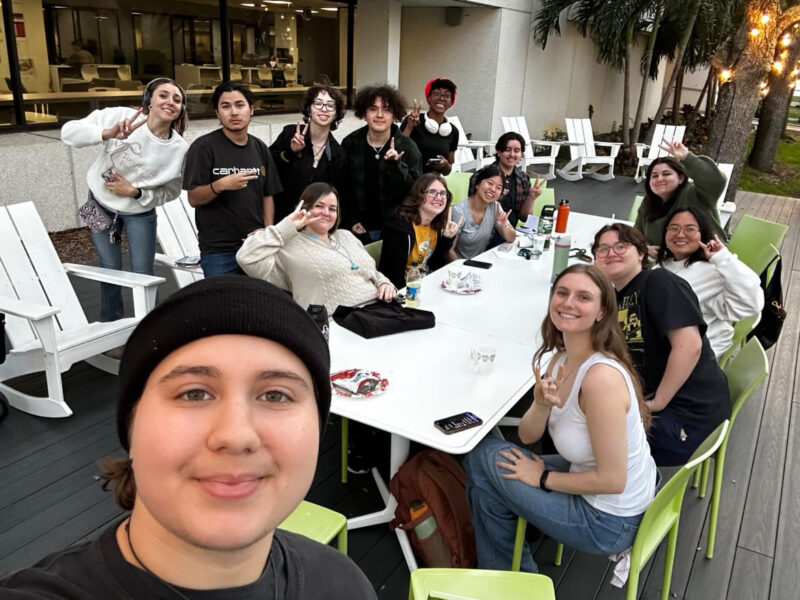Above photo: The South Asian Association hosts Holi Hai every year, offering cultural food, dance and a vibrant mess of color. Dylan Hart | The Crow’s Nest
By Dylan Hart
Dozens of students dressed in white South Asian Association T-shirts lined up against a wall in the central circle on Harbor Walk Wednesday in preparation for Holi Hai, the annual South Asian festival of color.
It wasn’t long before those same students were sprinting across the lawn behind them and launching packets of colored powder at each other, turning the campus into a brilliant warzone of green, pink, blue, red and yellow hues, each representing virtues held by South Asian culture.
Alongside the exciting dodgeball-like game of launching color packets, the South Asian Association brought traditional Indian food, as well as mash-ups of American and Indian pop music and dance performances.
“Holi Hai is a celebration of colors at the beginning of spring – the colors represent what spring would represent. It’s a rebirth,” Radhika Dang, president, founder and choreographer for the SAA said.
Holi Hai is modeled after Holi, a complex religious and cultural South Asian festival based on the Hindu calendar that is celebrated every spring. In South Asia, the festival includes water guns, amplifying the mess made by the powder.
Dang, who is in her final term as president for the SAA, started the club in the interest of seeking diversity on campus in 2014.
“The primary focus is to celebrate the small number of South Asians on this campus, bring them together and share our culture with others,” Dang said.

A visually captivating and incredibly messy event, Holi Hai truly sprayed the campus with pigment. Hard throws smashed packets open on the ground, and participants finished them off by pouring the contents on their friends’ heads.
Entrances to the University Student Center and Residence Hall One hosted signs directing guests to “dust off powder” before entering the building.
Powder or no powder, the event sticks with students and leaves a lasting impression on participants.
Dang, alongside three other performers, also led two traditional Bollywood dances as part of the SAA Bollywood Dance Team before the color festival officially launched. They swapped outfits between dances to showcase different parts of Indian culture for the audience.
“The first dance was an ode to an old generation (of Bollywood dance) back to the ‘70s and ‘80s,” she said.
The second dance kicked off the following festivities, as the dance team held plates with colored powder on them and launched them into the air with their movements, spraying themselves and onlookers with the colored dust.
“In India, when the harvest begins, (Holi) celebrates love – it’s a blossom of life,” said Dang.



